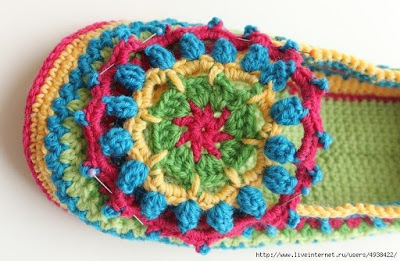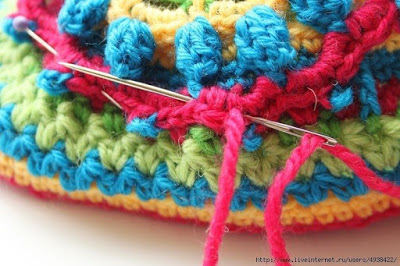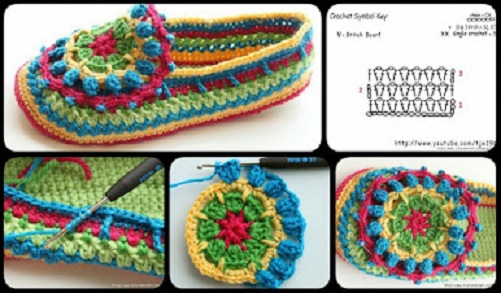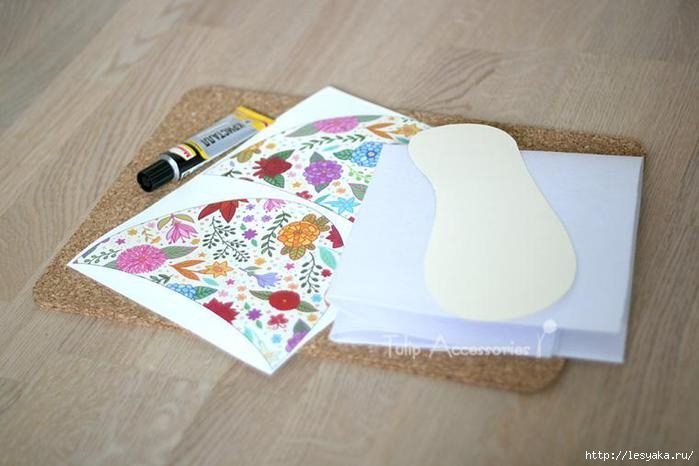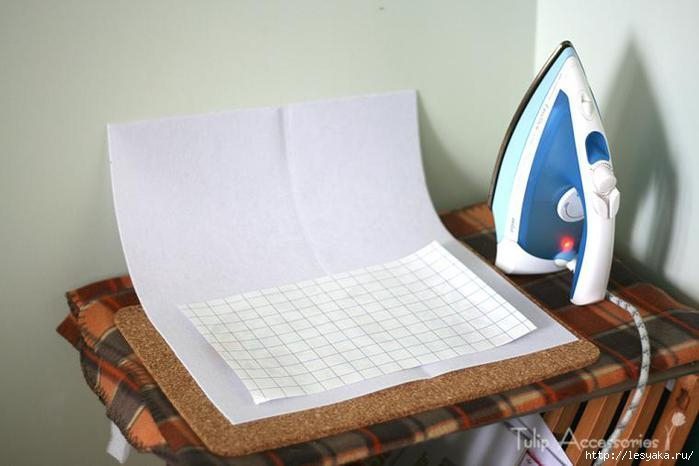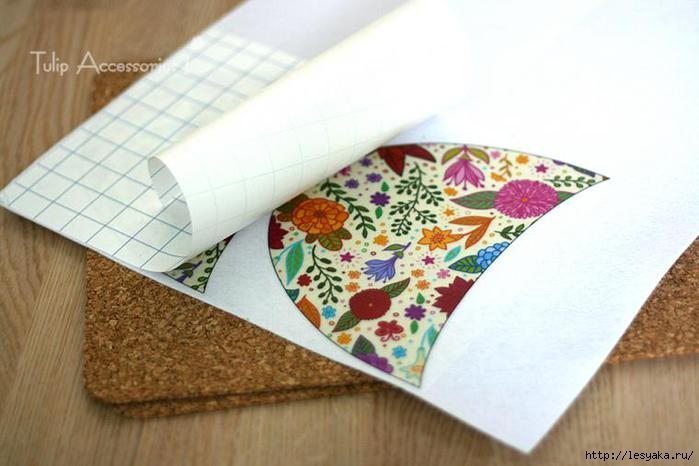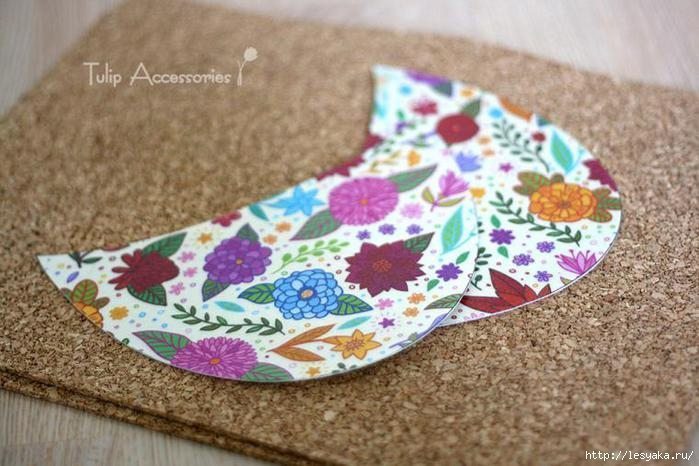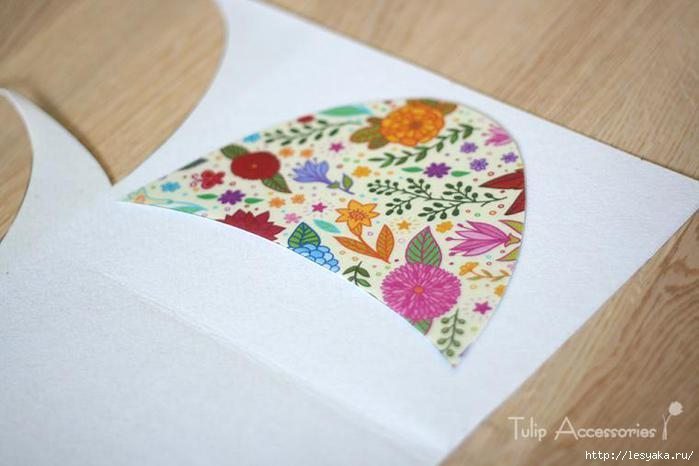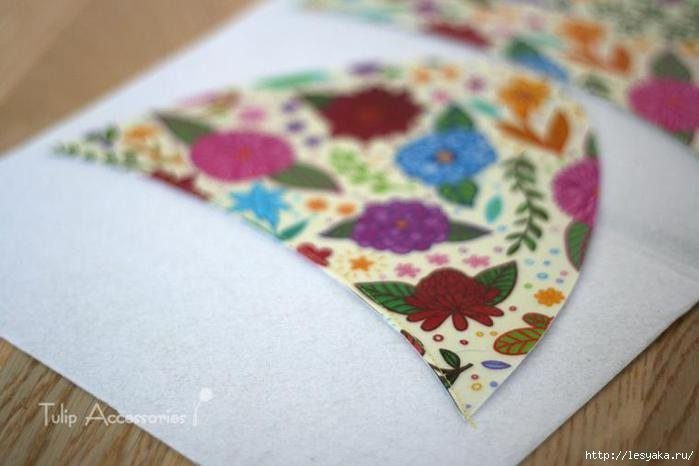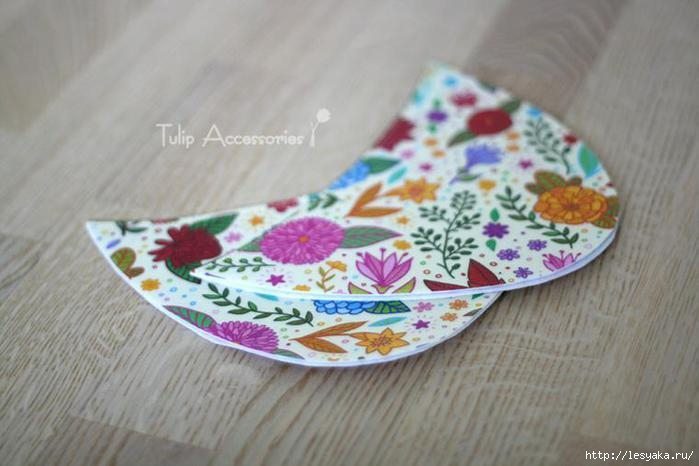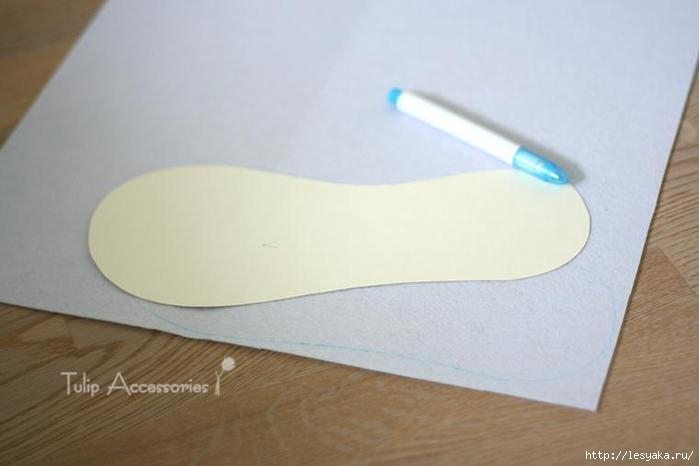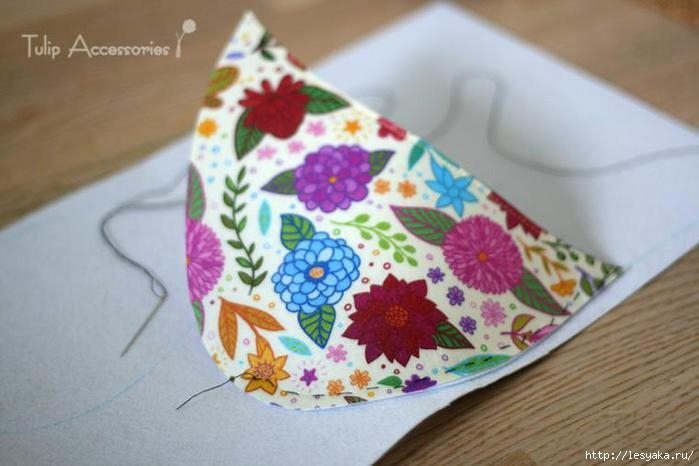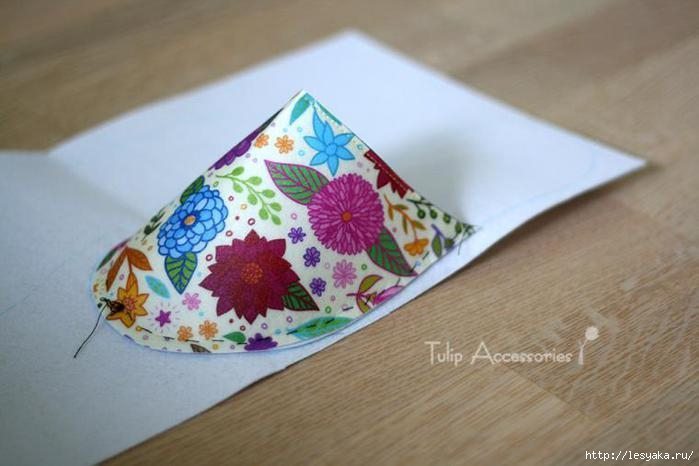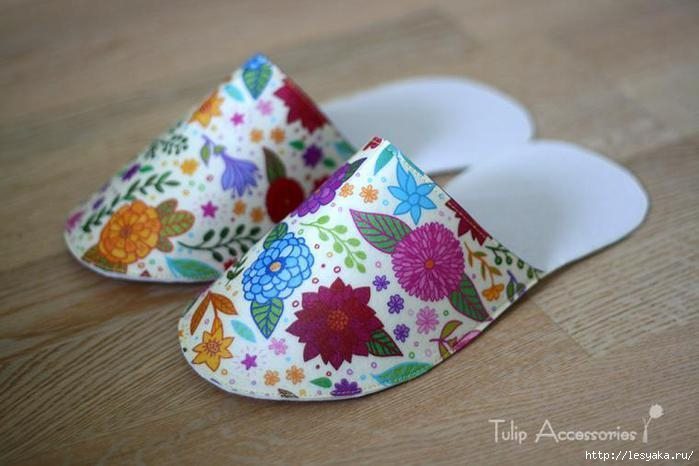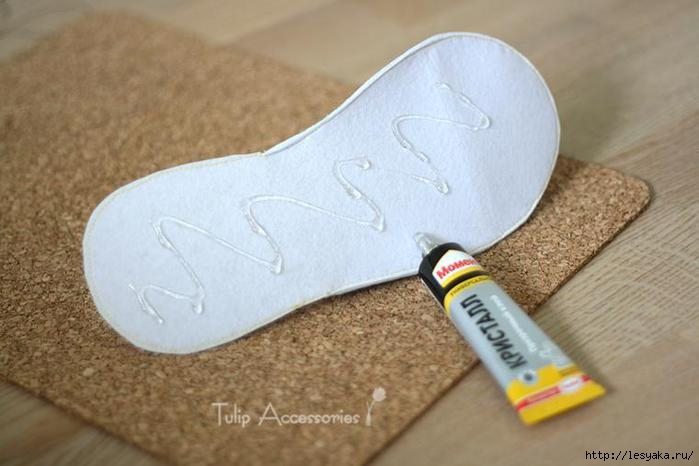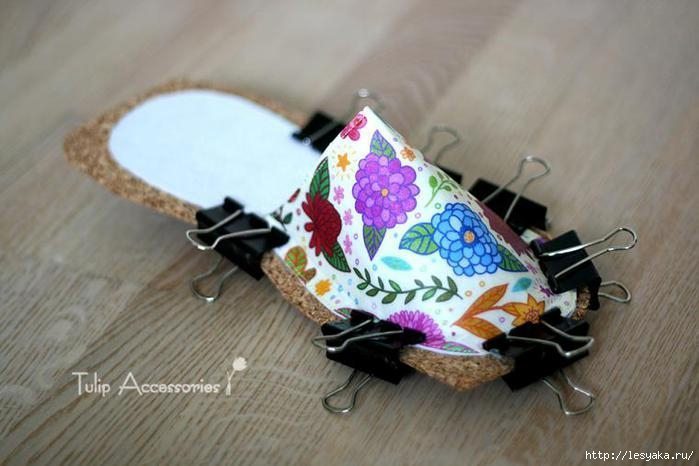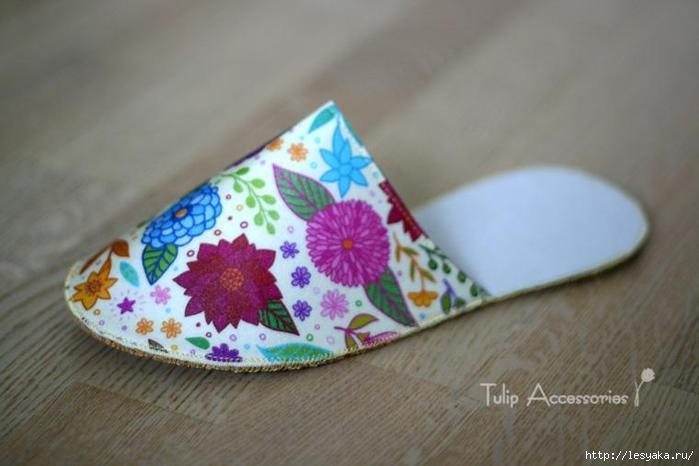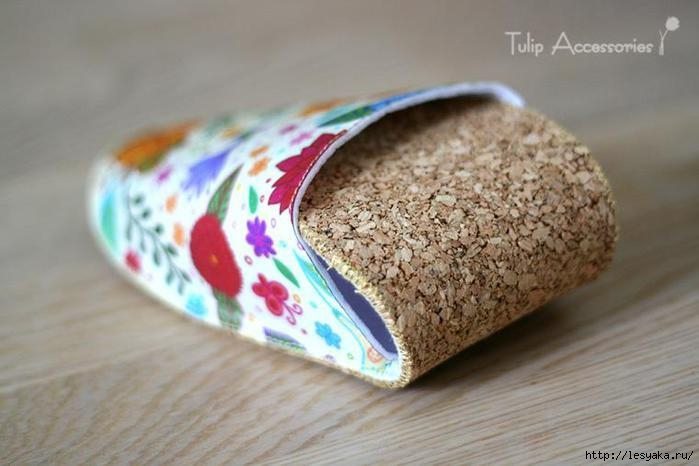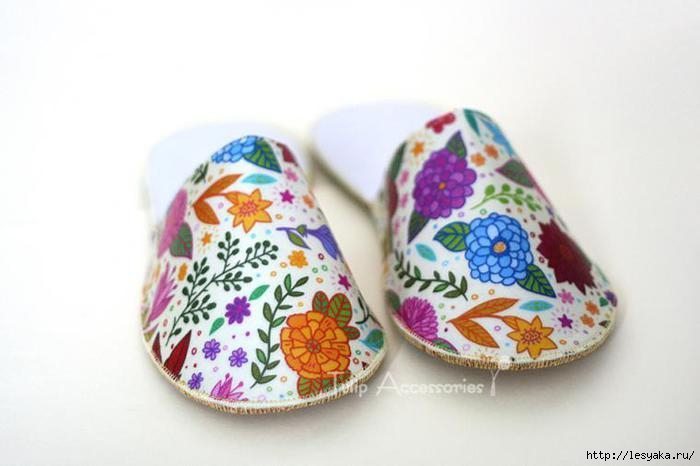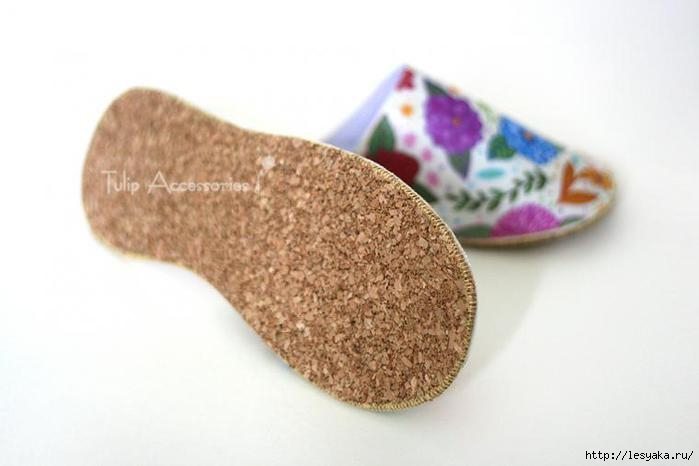Colorful crochet slippers:
Size: 38
Materials: yarn of different colors, of not less than 70% wool, hook number 3
Sole: Knitting guided by the sole of your slipper insole, approximate description in pictures, but it is easy to repeat.
Start to perform the sole 32 / n, knit columns without nakida around, adding columns at each end of the chain -. 4 rows.
Put the loop tag field extension of the sole.

 Continue to knit columns without nakida in the narrow parts and polustolkikami with nakida with posts with nakida in the widest part of another 2 series.
Continue to knit columns without nakida in the narrow parts and polustolkikami with nakida with posts with nakida in the widest part of another 2 series.
Cut the thread.
Connect thread on the mark.Knit only the wide part of the label to label.Cut the thread.
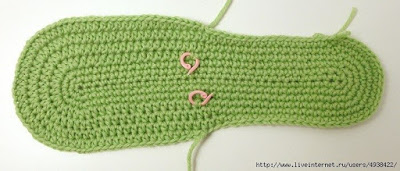 Sole is ready!
Sole is ready!
Stop: connect the thread of a different color in the center of the heel.
1st row: knit columns without nakida.  2nd row: knit columns without nakida only the inner wall of the loop.
2nd row: knit columns without nakida only the inner wall of the loop. 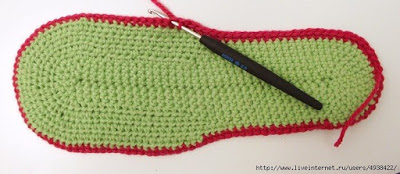
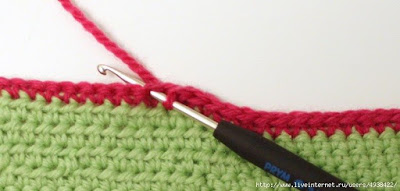 3-4 rows: Change color, knit columns without nakida.
3-4 rows: Change color, knit columns without nakida. 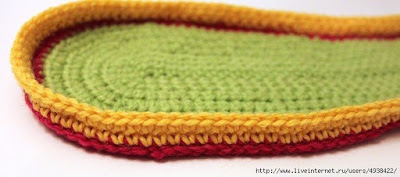
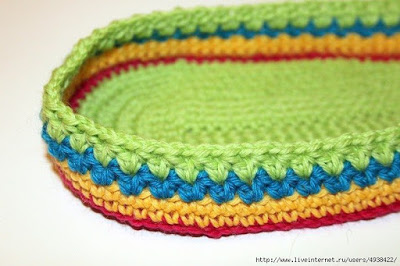 5-6 rows: Change yarn, knit V-bars on the chart.
5-6 rows: Change yarn, knit V-bars on the chart. 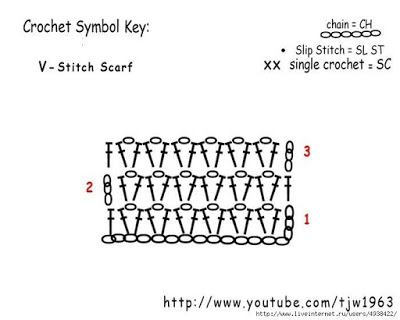 Start to perform subtraction of loops on the fingers, calculated using the subtraction place your foot, noting labels provyazyvat 2 columns without nakida together for subtraction
Start to perform subtraction of loops on the fingers, calculated using the subtraction place your foot, noting labels provyazyvat 2 columns without nakida together for subtraction  8th row: Change yarn, knit pattern for the scheme to metkok ubavok and columns without nakida (subtracting the desired number of columns) between the marks.
8th row: Change yarn, knit pattern for the scheme to metkok ubavok and columns without nakida (subtracting the desired number of columns) between the marks. 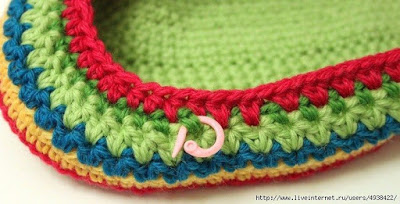 9th row: Change yarn to knit columns without nakida.
9th row: Change yarn to knit columns without nakida.
10th row: Knit columns without nakida simultaneously perform decorative columns 3 columns nakida for the 7th series of work. 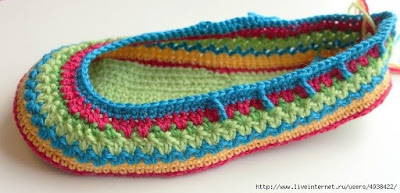
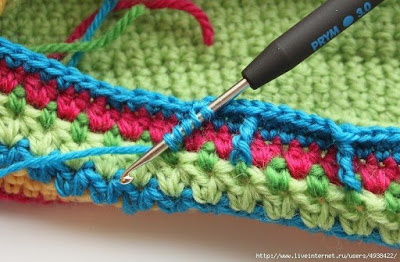
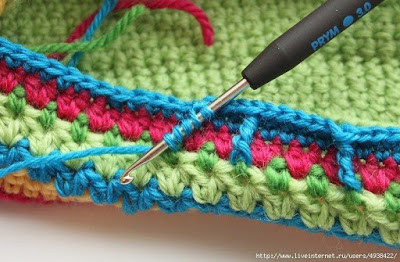 11th row: Change yarn to knit columns without nakida
11th row: Change yarn to knit columns without nakida 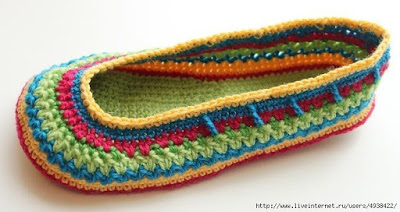 Top: dial 4 a / c, connected in a ring..
Top: dial 4 a / c, connected in a ring..
1st row: (1 st s / n, 2 / n.) – 8 times in the ring.
2nd row: (3 st s / n, 1 / n.) – In each arch of 2 loops.
3rd row: (1 st w / n, 5 a / c..) – In each arch of the 1st loop.
4th row: * 4 tbsp. b / n in the arch of the 5-loop, 1 tbsp. b / n in the arch of the 1st loop of the 2nd row. 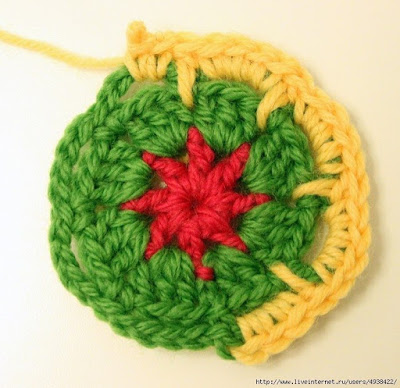 5th row: Knit lush column + 3 / n. between 2 central columns of the arch 5-loops and arches in a column of the 1st loop.
5th row: Knit lush column + 3 / n. between 2 central columns of the arch 5-loops and arches in a column of the 1st loop.
To associate a magnificent column: knit 4 tbsp. s / n in one loop, remove the loop from the hook, crochet thread the upper loop of the first column, put back the loop on the hook (= 2 loops on hook), knit 2 sts together.  6th row: thread runs two colors at the same time, (3 tbsp b / n thread A thread in pico, 3 tablespoons w / thread A..) In each arch.
6th row: thread runs two colors at the same time, (3 tbsp b / n thread A thread in pico, 3 tablespoons w / thread A..) In each arch.
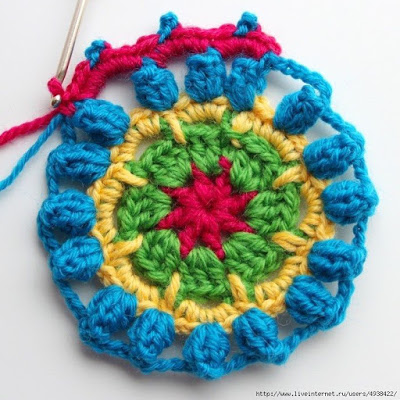
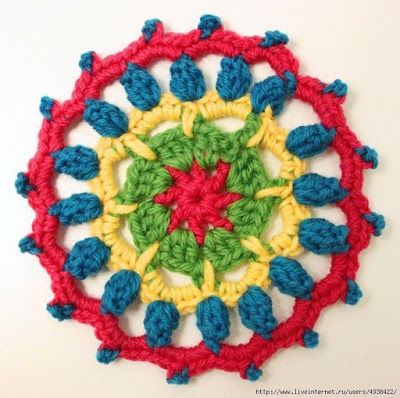 Sew the top part to the base.
Sew the top part to the base. 